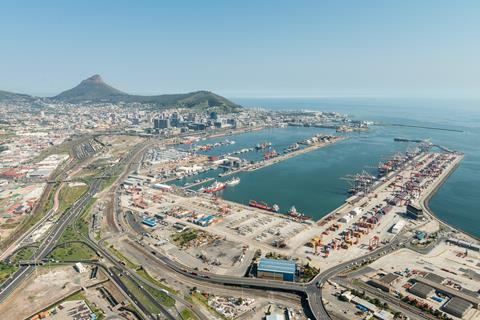Old problems return to the city’s container terminal and are severely disrupting export operations

Earlier optimism of improved efficiencies at the port of Cape Town has faded, as disruptions between late February and early March exposed the inadequacy of the measures in place to prevent delays.
“As a result, two weeks’ worth of apple shipments arrived simultaneously in multiple markets, leading to price fluctuations and logistical bottlenecks,” said leading exporter Tru-Cape Marketing.
The group explained that during this period, extreme winds reaching 100-120km per hour – well above the operational threshold of 80km/h – caused severe disruptions at the Cape Town Container Terminal, bringing cargo movement to a near standstill.
“In total, 12 vessels were reported to be waiting at anchor, and over 200 operational hours were lost, creating significant delays across the supply chain,” the group stated.
Roelf Pienaar, managing director of Tru-Cape, said the situation presented major challenges for the company.
“The delays in cargo handling have created a ripple effect, impacting container availability, trucking operations, and ultimately, market access,” he said.
With depots struggling to keep up with demand, securing empty containers has become increasingly difficult, Pienaar pointed out.
Meanwhile, trucking operations have been disrupted as scheduled pickups and deliveries are held up at the port or container depots.
These challenges force exporters to adjust their schedules, often missing key market windows.
“As a Western Cape-based export-driven company, we are highly dependent on the port of Cape Town,” Pienaar explained.
“Transporting apples and pears to Durban or Gqeberha is not a viable alternative, as the additional cost – up to US$3 per carton (55 rand) – cannot be absorbed by the market.
”The operational challenges are adding immense pressure to the supply chain, driving up costs, and creating bottlenecks that are not easily resolved in the short term,” he continued.
While logistical challenges were expected this year, Pienaar said he hoped for a slight improvement over the past few seasons’ poor performances.
“However, productivity levels remain well below international standards,” he confirmed.
“In recent weeks, the gross crane movements per hour (GCH) – a key productivity indicator – have averaged around 15, whereas the globally accepted benchmark is between 26 and 30 GCH. For context, in 2012, the Port of Cape Town was operating at 33 GCH.”
Tru-Cape said that although the introduction of new port management and additional equipment marked steps in the right direction, the overall issues remained unresolved.
Pienaar said he believed that private sector participation was the only viable long-term solution to the port’s ongoing inefficiencies.
“We hope to see strategies in this regard fast-tracked,” he said. “Export volumes are set to increase as young orchards come into production, and if these logistical challenges persist, they will severely impact the industry’s growth.
”Addressing the problems at the port must be an urgent priority.”



